Key Takeaways
1. The AI Revolution is Here and Transformative.
AI is the most powerful tool that humans have yet created, and we are just beginning to learn how potent it could become.
A new era. We are at the dawn of an artificial intelligence revolution, a force already reshaping our world. AI isn't just complex calculators; it's a new approach where machines learn from information, amplifying human intelligence to solve previously impossible problems. This transformation has already begun, touching everything from search engines to cars and even washing machines.
Beyond simple tasks. While early AI examples like recognizing speed signs or optimizing washing machine cycles show its presence, recent breakthroughs like ChatGPT demonstrate a leap in capability. These systems can engage in plausible conversations and pass complex exams, hinting at the profound changes intelligent machines will bring to our lives in the coming years.
Powerful, yet complex. This amazing technology sparks both excitement and concern. Its complexity can lead to fear, but understanding how AI thinks is crucial to harnessing its enormous opportunities. AI is poised to become the most powerful tool we've ever created, fundamentally changing our lives and the lives of future generations.
2. AI Thinks Differently: Learning vs. Programming.
Artificial intelligence is a completely new approach to computing.
Learning from data. Unlike traditional computers that follow step-by-step programs, AI machines learn from information. This inductive approach, synthesizing observations to reach probable conclusions, allows AI to tackle complex problems where a purely logical, deductive program is infeasible, such as recognizing objects or mastering games like Go.
Inspired by biology. Modern AI uses artificial neural networks, simplified models of the human brain's neurons and connections. These networks learn by processing vast amounts of data, adjusting internal parameters to recognize patterns and generalize features, much like our brains learn to identify a cat after seeing many examples.
Beyond human limits. While humans excel at tasks requiring common sense or multisensory input, AI can surpass human performance in specific, data-rich domains. By learning through methods like reinforcement learning, AI systems can achieve superhuman skill levels in games or identify complex patterns in data that humans might miss, demonstrating a different, often more efficient, form of intelligence for certain tasks.
3. AI's Foundation: Computing, Software, and Information.
Without semiconductors, the Information Age that we now live in would still be science fiction.
Hardware breakthroughs. The rise of AI is inextricably linked to the history of computing, particularly the invention of the transistor and the integrated circuit. Robert Noyce's work at Fairchild Semiconductor, spurred by the Apollo program's need for small, low-power electronics, led to microchips that have seen a 25-billion-fold increase in capability since 1960, powering everything from smartphones to data centers.
Software evolution. Alongside hardware, software development, pioneered by figures like Ada Lovelace and Grace Hopper, provided the instructions for these powerful machines. From early mechanical computers to modern programming languages and operating systems, software has become the engine of innovation, enabling complex applications and making computers accessible.
The information flood. The final ingredient for modern AI was the explosion of digital information, largely driven by the internet and the World Wide Web. Tim Berners-Lee's invention made sharing information easy, leading to an unprecedented growth in digital data. This vast, accessible pool of information became the training ground for AI systems, allowing them to learn and build knowledge on a massive scale.
4. AI Learns Like Us, But Lacks Human Depth.
Intelligence is the ability to gather and use information, in order to adapt and survive.
A broad definition. Defining intelligence is complex, but a useful perspective is the ability to gather and use information to adapt and survive. This applies to all biological life, from house martins navigating continents to single-cell microbes finding food, highlighting that intelligence takes many forms beyond human intellectual pursuits.
Human complexity. Our intelligence is deeply intertwined with multisensory input, emotions, and a sophisticated understanding of context and common sense. We build complex world models by combining sight, sound, touch, taste, and smell with memories and feelings, allowing us to navigate new situations and predict outcomes, even with incomplete information.
AI's limitations. While AI can learn patterns, make predictions, and solve problems within defined domains, it currently lacks this rich, integrated human experience. AI systems struggle with true common sense, cannot genuinely experience emotions, and their "understanding" is based on statistical correlations in data, not subjective awareness or the ability to adapt outside their training environment.
5. Ultra-Intelligent Machines Are Coming, Not Sentient Skynet.
Let an ultra-intelligent machine be defined as a machine that can far surpass all the intellectual activities of any man however clever.
Exceeding human capacity. The concept of an ultra-intelligent machine, capable of intellectual feats far beyond human ability, is becoming technically feasible. Machines connecting thousands of specialized processors could soon match or exceed the knowledge capacity of a human brain, enabling breakthroughs in medicine, science, and engineering.
Physical limits. However, the idea of a self-improving, runaway 'singularity' event is unlikely. Current semiconductor technology is approaching fundamental physical limits, slowing the exponential growth seen historically. While new computing paradigms like quantum or molecular computing may emerge, they are decades away and will still be human-designed tools.
Human-directed purpose. AI systems, even ultra-intelligent ones, are built and directed by humans. Their learning methods and objectives are defined by us. They lack free will, consciousness, or a survival instinct. The power lies not in the machine becoming sentient, but in its ability to amplify human intelligence and creativity under our control.
6. AI's Immense Potential for Global Good.
AI has the potential to help us solve some of the most complex problems that humanity faces.
Environmental solutions. AI offers powerful tools to address climate change, from improving weather forecasting for renewable energy management to optimizing industrial processes and discovering new materials for batteries and carbon capture. AI is even being used to control plasma in fusion reactors, potentially unlocking clean, limitless energy.
Transforming healthcare. AI is revolutionizing healthcare through faster, more accurate diagnostics using advanced imaging and molecular analysis. It's accelerating drug discovery by predicting protein structures and identifying promising molecules. AI can also power personalized health monitoring and support, helping aging populations and those with chronic conditions live healthier, more independent lives.
Democratizing education. AI-powered personalized learning systems can adapt to individual student needs, providing tailored content and support. This can help address global literacy and numeracy gaps, make education more accessible and affordable, and free up teachers to focus on fostering critical human skills like curiosity and creativity.
7. Navigating AI's Significant Challenges.
The real risk that we face is that artificial intelligence will consolidate the historical biases that are already encoded in much of our current information and in the way previous generations wrote their history.
Privacy concerns. AI thrives on data, raising significant privacy issues. Companies collect vast amounts of personal information, often without full transparency or explicit consent. AI's ability to find patterns can de-anonymize data, creating detailed profiles that can be used for targeted marketing, surveillance, or even discrimination.
Amplifying bias. AI systems trained on biased historical data risk perpetuating and even amplifying human biases related to gender, race, culture, and more. This can manifest in unfair loan applications, job screenings, or even criminal justice systems, requiring conscious effort to ensure diverse data and unbiased algorithms.
Emotional manipulation. AI is increasingly used to understand and influence human emotions, particularly in online environments. By analyzing user behavior and responses, AI can create addictive feedback loops or tailor content to evoke specific emotional reactions, raising ethical questions about manipulation and the impact on mental well-being.
8. Responsible AI: Human Control is Key.
Responsible AI must therefore place controls over these human makers.
Human responsibility. AI is a tool, and its behavior is determined by the humans who design, train, and deploy it. When AI systems cause harm, the responsibility lies with the developers and organizations, not the machine itself. This is crucial for establishing accountability and ensuring ethical use.
Building trust. Developing responsible AI requires transparency, oversight, and continuous testing. AI systems should be designed to be human-centric, acknowledging their probabilistic nature and providing users with control. Rigorous testing, including checking for bias and unintended consequences, is essential before and after deployment.
Regulation and education. Effective regulation is needed to guide AI development and deployment, focusing on areas like data privacy, bias mitigation, and the prohibition of autonomous lethal weapons. Educating developers on ethics and fostering independent institutions with technical expertise are vital steps to ensure AI is used for good and earns public trust.
9. AI Revolution: Slow Burn, Massive Impact.
Technological revolutions actually tend to creep quite slowly into our lives.
Gradual transformation. Like past revolutions driven by steam or electricity, the AI revolution is a gradual process, not a sudden event. While breakthroughs capture headlines, the full societal and economic transformation will take decades, as AI moves from being a "point solution" to a general-purpose technology integrated across industries.
Economic shifts. AI promises significant productivity gains, potentially reshaping the workforce. While some jobs may be automated, AI is more likely to augment human capabilities, freeing people from repetitive tasks and increasing demand in new areas. Managing this transition through education and ensuring broad distribution of benefits will be key challenges.
Global competition. The AI revolution is also a geopolitical race. Nations that invest heavily in AI development and infrastructure stand to gain significant economic and strategic advantages. Avoiding restrictive regulations that stifle innovation while ensuring ethical use is a delicate balance required for countries to thrive in the coming AI-powered world.
Last updated:
FAQ
1. What’s How AI Thinks by Nigel Toon about?
- Comprehensive AI journey: The book traces the origins, development, and societal impact of artificial intelligence, presenting AI as the most powerful tool humans have created.
- Personal and expert insights: Nigel Toon shares his experiences as an AI entrepreneur and interviews leading researchers, offering both technical and human perspectives.
- Structure and accessibility: Divided into three parts, the book covers how AI became possible, how it differs from human intelligence, and its potential and challenges, all in accessible language for non-technical readers.
- Purposeful exploration: Toon aims to equip readers with the knowledge to understand, use, and control AI responsibly, dispelling myths and fears.
2. Why should I read How AI Thinks by Nigel Toon?
- Demystifies AI concepts: The book breaks down complex AI ideas into clear, relatable explanations, making the technology approachable for everyone.
- Expert authority: Nigel Toon’s background as a founder of Graphcore and his interviews with top AI minds provide credible, insider perspectives.
- Balanced perspective: Readers gain a realistic understanding of AI’s capabilities, limitations, and ethical challenges, avoiding both hype and fear.
- Societal relevance: The book discusses how AI will affect daily life, work, and global issues, helping readers prepare for the future.
3. What are the key takeaways from How AI Thinks by Nigel Toon?
- AI as a human tool: AI is a powerful, human-created technology that can augment, not replace, human intelligence.
- No imminent singularity: The book dispels myths about AI autonomy and the likelihood of a runaway intelligence explosion.
- Ethics and control matter: Responsible development, regulation, and human oversight are essential to ensure AI benefits society.
- Broad impact: AI is already transforming fields like healthcare, education, and the environment, but brings challenges like bias, privacy, and fairness.
4. What are the best quotes from How AI Thinks by Nigel Toon and what do they mean?
- "AI is the most powerful tool that humans have yet created." This highlights the transformative potential of AI and its central role in shaping the future.
- "Intelligence is the ability to gather and use information, in order to adapt and survive." Toon’s broad definition emphasizes adaptability and information processing as the core of intelligence, whether biological or artificial.
- "The singularity is just not technically possible today." This quote dispels fears of an imminent AI takeover, stressing current technological limitations.
- "AI should remain under human control, with humans accountable for AI actions." Toon underscores the importance of ethical responsibility and oversight in AI development.
5. How does Nigel Toon define intelligence in How AI Thinks?
- Information and adaptation: Intelligence is defined as the ability to gather and use information to adapt and survive, applicable to all living things and machines.
- Components of intelligence: It includes sensing, learning, generalizing, predicting, pattern recognition, communication, planning, creativity, and possibly consciousness.
- AI vs. biological intelligence: AI’s intelligence is task-specific and lacks self-driven goals or survival instincts, operating within human-defined objectives.
- Evolutionary context: Intelligence evolved as a survival mechanism, and AI is seen as a continuation of this evolutionary process, amplifying human cognition.
6. What are the key technological developments that made AI possible according to How AI Thinks by Nigel Toon?
- Electronic computers: The invention of machines like Colossus during WWII enabled rapid information processing, laying the groundwork for modern computing.
- Semiconductors and Moore’s Law: The development of transistors and integrated circuits led to exponential growth in computing power, essential for AI’s progress.
- Neural networks and deep learning: Advances in artificial neural networks, especially transformer models with attention mechanisms, revolutionized AI’s ability to process language and images.
- Data and the internet: The explosion of digital information via the web provided the vast datasets necessary for AI systems to learn and improve.
7. How does How AI Thinks by Nigel Toon compare AI and human intelligence?
- Learning methods: Humans learn through evolution and experience, while AI learns from data using machine learning algorithms designed by humans.
- Processing and memory: Human brains integrate processing and memory in neurons, making them highly efficient and parallel, whereas AI systems separate these functions, often causing bottlenecks.
- Common sense and context: Humans excel at building rich, multisensory world models and using common sense, while AI struggles with context and generalization beyond its training data.
- Task specificity: AI’s intelligence is probabilistic and narrow, excelling at specific tasks but lacking the broad adaptability of human intelligence.
8. What does How AI Thinks by Nigel Toon say about consciousness and whether AI can be conscious?
- Consciousness as a mystery: The book describes consciousness as the subjective experience of awareness, which remains unexplained by neuroscience.
- Theories discussed: Toon covers theories like the global neuronal workspace and integrated information theory, linking consciousness to complex brain activity.
- AI’s limitations: AI systems can simulate aspects of cognition but lack genuine conscious experience, emotions, or self-awareness.
- Biological uniqueness: Consciousness is presented as a uniquely biological phenomenon, not replicable by current AI.
9. What is an ultra-intelligent machine and is it possible according to How AI Thinks by Nigel Toon?
- Definition and origins: An ultra-intelligent machine would surpass all human intellectual activities and could design even better machines, a concept first proposed by Jack Good.
- Current feasibility: While large-scale AI processors are approaching human brain capacity in compute and memory, such machines require massive power and infrastructure.
- Human direction required: Even the most advanced machines will need human input for training and improvement; they cannot autonomously reprogram or evolve.
- No imminent singularity: The book argues that a runaway intelligence explosion is not technically possible today and remains unlikely in the near future.
10. What are the main AI learning methods explained in How AI Thinks by Nigel Toon?
- Deep learning and neural networks: Inspired by the brain, these systems learn to recognize patterns from large datasets, enabling breakthroughs in image and language understanding.
- Reinforcement learning: Machines learn by trial and error, receiving rewards for successful actions, similar to animal learning.
- Transformer models and attention: The introduction of attention mechanisms in transformer models allows AI to focus on key parts of input data, powering advanced language models like GPT-4.
- Supervised, unsupervised, and self-supervised learning: The book explains how AI learns from labeled data, unlabeled data, and by predicting parts of data from other parts.
11. How does How AI Thinks by Nigel Toon describe AI’s impact on healthcare, education, and the environment?
- Healthcare transformation: AI improves diagnostics, accelerates drug discovery, and enables personalized health monitoring, supporting doctors and patients alike.
- Education revolution: AI powers personalized learning, expands global access, and supports lifelong skill development, helping teachers focus on coaching and creativity.
- Environmental solutions: AI optimizes energy management, advances fusion energy research, and enhances sustainable agriculture and industry, contributing to global carbon reduction.
- Societal benefits: These applications demonstrate AI’s potential to address some of humanity’s most pressing challenges.
12. What are the main challenges and ethical concerns of AI highlighted in How AI Thinks by Nigel Toon, and what solutions are recommended?
- Privacy and data risks: AI’s reliance on vast personal data raises concerns about misuse, requiring transparency, user control, and strong regulations like GDPR.
- Bias and fairness: AI can inherit and amplify human biases, affecting critical decisions; solutions include diverse data, ethical training, and independent testing.
- Manipulation and misinformation: AI-driven platforms can exploit emotions and spread misinformation, necessitating awareness, regulation, and safeguards for democratic processes.
- Autonomous weapons and accountability: The book warns against lethal autonomous weapons and calls for international treaties, robust testing, ethical education, and human-centric AI design to ensure responsible development and governance.
Review Summary
How AI Thinks receives mixed reviews, with ratings ranging from 2 to 5 stars. Some readers find it an accessible introduction to AI, praising its historical context and positive outlook. Others criticize its superficial treatment of complex topics, circular reasoning, and glossing over of important concepts. The book is seen as a good primer for AI novices but may disappoint those seeking deeper insights. Critics note the author's entrepreneurial background and question the depth of expertise in philosophy and cognitive science.
Similar Books
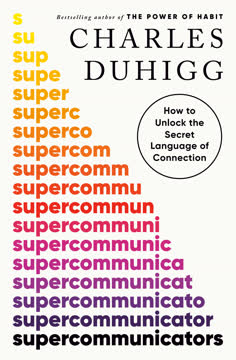

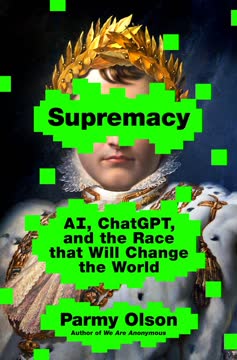
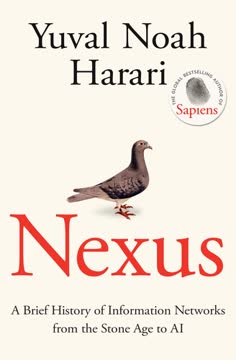


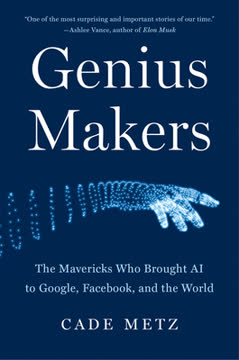
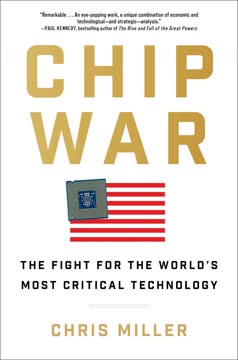

Download PDF
Download EPUB
.epub digital book format is ideal for reading ebooks on phones, tablets, and e-readers.




